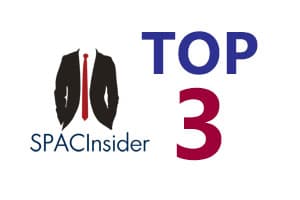Top 3 SPAC Targets – Chip-Makers
SPACInsider contributors Anthony Sozzi and Sam Beattie this week compiled their three favorite potential SPAC targets among companies manufacturing chips and other components for the modern economy. We look at why they are compelling and why each could be a fit for a blank-check merger.
As they say, in the land of the blind, the one-eyed man is king. Well, in the land of global chip shortages, chip manufacturers get to be two-eyed kings and now have a particularly attractive timeframe in which to maximize their value.
There are also nearly endless reasons to invest in small and medium-level players in the chip manufacturing space. Already, last year’s shortages led to 700,000 fewer cars being manufactured in the US and other products from gaming consoles to wind farms forced to halt rollouts to wait on more supply. There’s also the question of diversity of supply.
Taiwan-based TSMC (NYSE:TSM) has held enough of the high-end chip market to be considered to be bordering on monopoly and the top 10 suppliers of processor chips overall controlled 57% of the global market – and the top five 42% – in 2021. Many of these other top chip-makers are also subject to the same geopolitical risk inherent in their location in Taiwan as TSMC, and so it is probably an unalloyed good that the mid-level players catch up.
SambaNova Systems
Palo Alto-based SambaNova systems itself has no shortage of high-profile backers, including Intel (NASDAQ:INTC),Temasek and Samsung (KS:005930), but it has also not raised capital since its April 2021 Series D.
It also is among a growing group of companies aiming to not just provide additional bandwidth to the existing market, but also roll out smarter chips. Its processors have been used to track illegal fishing from space as well as more confidently identify potential anomalies in medical scans.
It has combined all of this into what it calls dataflow-as-a-service, engaging its deep language processing and machine-learning engines to take over chunks of what may be local data science needs within customer organizations. This expresses itself in allowing clients to automatically enhance the resolution of images posted to its websites as well as getting auto-translations faster and making decisions that are more likely to drive social media engagement.
Its investor base also includes a number of SPAC participants that may be persuaded to jump in even during a tough market for SPACs. BlackRock (NYSE:BLK) was in on the company’s last $678 million raise and it has also put $23.4 billion to work into de-SPACing companies as a PIPE investor. BlackRock’s SPAC plays hit their peak in lockstep with the general SPAC market in February 2021, but it has hasn’t left the space joining a $252 million PIPE in July and a $900 million one in June.
Unlike some new-age platforms that are still under development, SambaNova’s systems are pre-trained for checking and re-checking transaction flows for banks as well as using natural language processing models to detect fraud or other forms of deception.

Skorpios Technologies
Skorpios’ Albuquerque, New Mexico base has also been a site for fine-tuning particular use cases. Among them, its semiconductors have made a point of prioritizing integration with laser and other forms of optical sensors. This puts it in line to be included in a range of precision optical hardware and its clients do in fact include a number of developers of lidar technology – a SPAC favorite.
Most recently, it has announced a strategic partnership to produce optical modules for the ColorChip Group. Its production is also US-based and it has not limited itself to the tech industry, providing products that help gauge the predictability of mining and oil and gas probes.
The questions about company readiness would also be less in this case, led as it is by Co-Founder, CEO and Chairman Stephen Krasulick. He has already led Optium through an IPO that was later acquired by UnitedHealth (NYSE:UNH).
But, that public company experience also comes with the realities of the times. There is now a narrow window to take advantage of the Biden administration’s new bill to support chip manufacturers. Skorpios is in a better position than most in offering a path into capturing this work with operations in multiple states while also serving international markets.

Tenstorrent
There is also capacity to be found in the great white north.
Toronto-based Tenstorrent is developing circuit processors that are designed to provide faster training and adaptability to algorithms. So far in this mission, it has taken money from a variety of frequent SPAC participants, grabbing $200 million from a May 2021 Series C that was led by Fidelity Management & Research.
This was its most recent capital raise, which could put it back at the well at a time when the markets expect big things from chip suppliers. Targeted chip-makers that connect to AI have been well-received by the market thus far. Most recently, Global SPAC took edge-computing-focused cybersecurity firm Gorilla public last month and this combination has not yet been met with the SPAC skepticism seen with other de-SPACs. It closed Thursday at $11.60 and is up in the pre-market.
Tenstorrent also in June announced former Lenovo President David Bennett as its Chief Customer Officer in a move that will likely gain customer contacts as well as experience in broader computing world.
For its part, Tenstorrent has worked to diversify its market with small, medium and fast versions of its processing card in addition to its server-level solutions. Perception Capital II (NASDAQ:PCCT) may be among the SPACs on Tenstorrent’s tail. It raised $230 million in October 2021 to seek out a disruptive technology target and now has less than three months before it must seek an extension.

